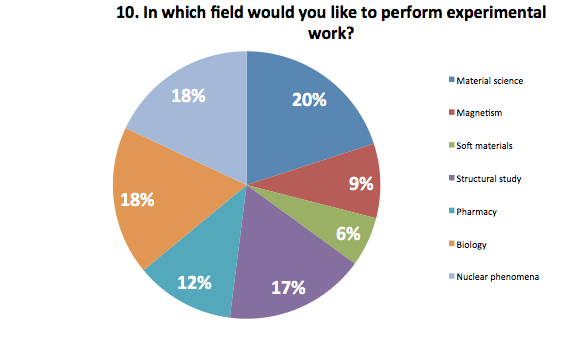Engaging with the next generation of neutron users

From June to August 2016, the Budapest Neutron Centre (BNC) conducted a survey to assess University students’ level of awareness and interest in the use of national and European research infrstructures, with a focus on ESS.
“Our need to learn more about the expectations of future ESS users is in line with our strategy of building capacity in our universities and research centres and be ready for the ESS user programme,” says Margit Fábián, beamline scientist and PR coordinator at BNC.
Margit is one of BrightnESS hub coordinators, leading the communication and outreach activities for the South-East Hub.
The survey targeted 100 students from Eötvös Loránd University and Budapest University of Technology and Economics, two leading hungarian institutes, with top programmes in physics, chemistry, engineering and IT.
The 56 students who answered the 15 questions provided information about their educational background, research field in experimental or theoretical science, awareness of existing research infrastructures and interest in ESS.
Over the surveyed students, 45% were MSc, 30% BSc, 16% PhD and 9% held a Post-Doc position, with specialisation in engineering (40%), physics (27%), chemistry (20%).
More than half (54%) had taken part in experimental research, either in physics (21%), biochemistry (17%) or analytic fields (16%). 27% had experience in simulation work.
Half of the students had previous experience at large-scale research facilities.
A high portion of the surveyed students (62%) was aware of the R&D opportunities provided by the 10 MW Budapest Research Reactor, the largest national facility, but only 34% had heard about the European Spallation Source. Only 21% of the total number of students knew about the technical features of the neutron source and its instrument suite.
Despite the low level of awareness, 50% of the students expressed interest in performing experiments at ESS, either through measurements (44%) or data analysis (38%).
“This first assessment clearly indicates the need for a more effective engagement with the students community,” concludes Margit “with the objective of growing the scientific community of Hungarian neutron users.”




 is funded by the European Union Framework Programme for Research and Innovation Horizon 2020, under grant agreement 676548.
is funded by the European Union Framework Programme for Research and Innovation Horizon 2020, under grant agreement 676548.